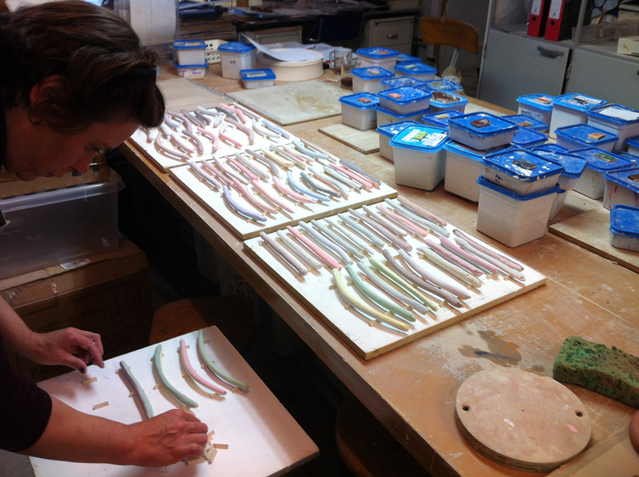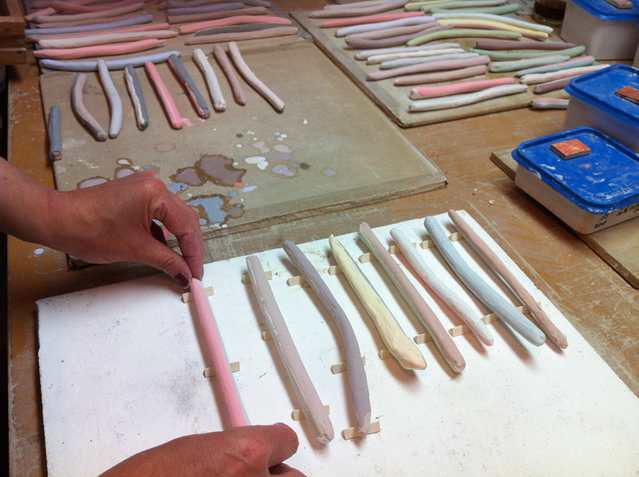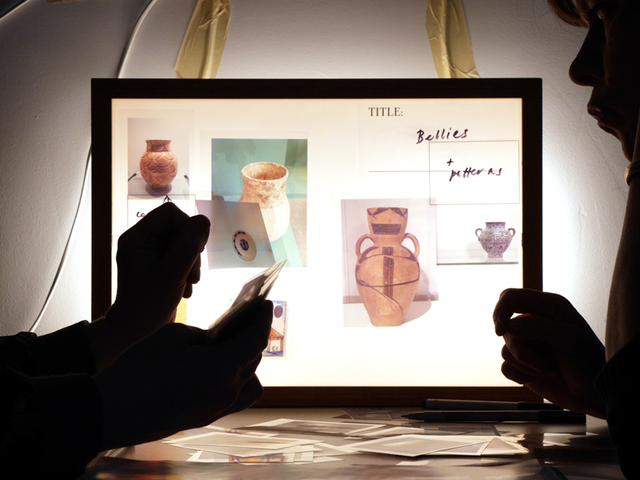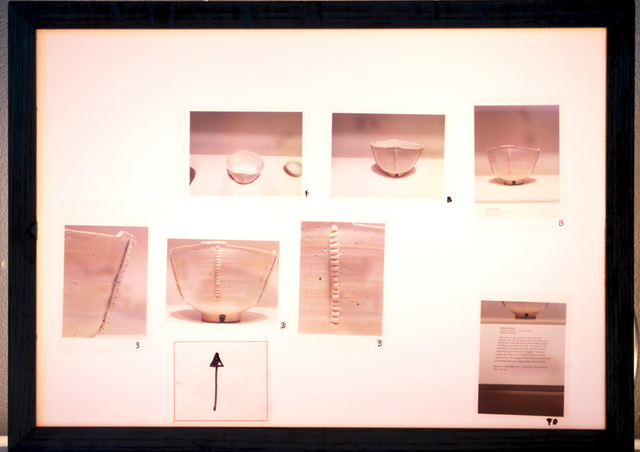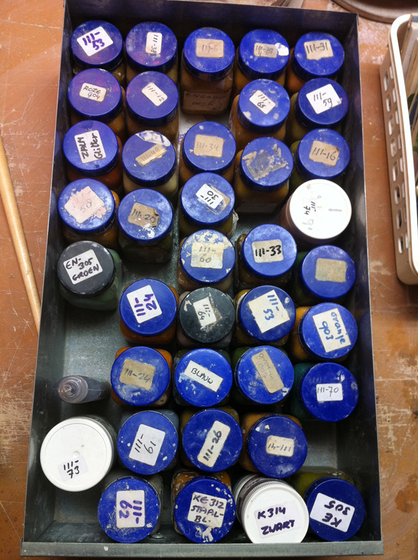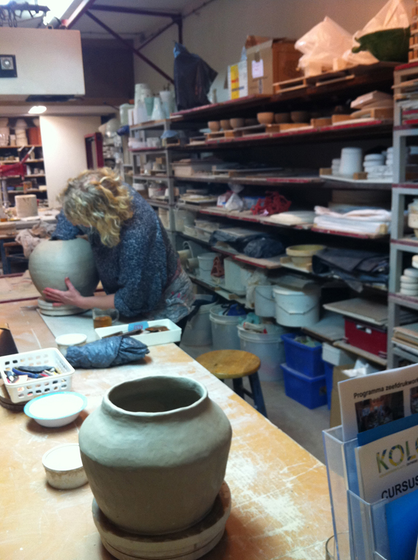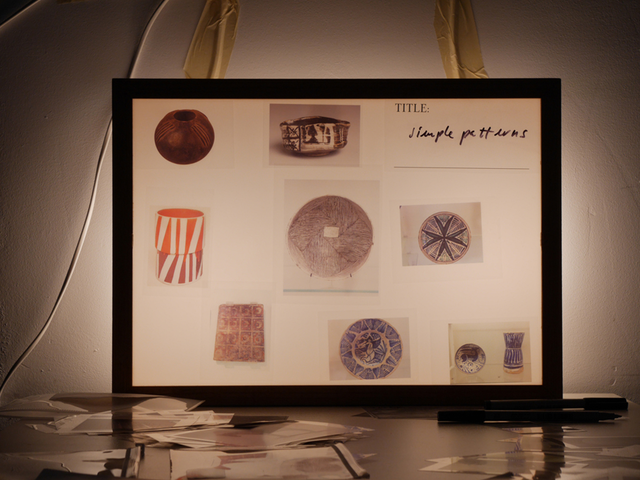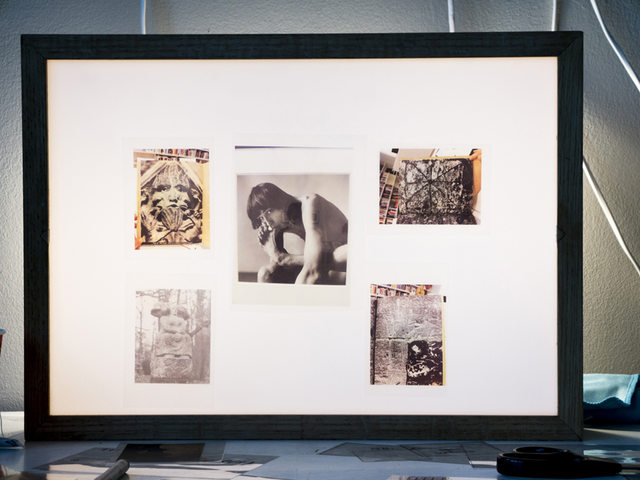Rudimentariness
My initial interest in reflecting on A Way of Making in relation to the notion of artistic research was the distinctive site of research in this project, which as the title suggests is the process of making itself. Making is not necessarily a term that resonates as a key aspect of many contemporary art practices. Many avant-garde movements of the twentieth century displaced the act of making with various forms of appropriation and conceptual gestures. Moreover, making refers to an act or process that is more basic, practical, and broad than what we conventionally associate with the artistic productions of artists and curators. The etymology of the verb to make ties together notions of building, working, constructing, and producing. What is central to the verb making, however, is that it is transitive, meaning that the process or act of making is passed over to an object.
Bergholtz and Pask embarked on this collaborative project through their shared desire to rethink making. To do this they turned to clay, because in their words:
Ceramics, a shared interest, announced itself as a terrain that we could enter not solely as beholders, but as actors – to explore the empirical and the visceral in making. The haptic appearance of ceramics, the explicit connotation of craft, and the (seemingly) easy and accessible techniques encouraged us to listen to our feeling that it was necessary to act on this desire to do something and learn something that is within – physical – reach.[1]
The various experiments in ways of working with clay – rubbing, piercing, seaming, pinching, moulding, kneading, squeezing, pushing, rolling, throwing, slapping, cutting; glaze painting, spraying, baking at different temperatures – has now been passed over to the objects that these experiments generated. Their investigations of these various ways of making are now embodied in the clay artefacts, which are the results of their research.
What is important is how they perceived these experiments as a form of taking time off from their habitual modes of making. In this instance they began from a position, in their own words, of ‘sheer innocence’.[2] I found this term suggestive for how it signals proceeding without knowledge of something’s significance and possible consequences. The two makers therefore adopted an attitude of not knowing that was simultaneously underpinned by a desire for learning together and through the material. In looking for a concept to help unpack this desire to rethink making from a position of innocence and not knowing, rudimentary, and eventually, rudimentariness emerged. The immediate connotations of rudimentary are rather negative, relating to an immature, undeveloped, or basic form. However, I was looking to qualify an attitude: the basic, undeveloped knowledge and savoir faire that the makers wilfully adopt in relation to what they were doing. Therefore, I added the suffix ness to signal this state, one that for the artists is clearly deemed productive in so far as it allows them to reapproach making.
Significantly, I borrow this more positive articulating of the term from the discipline of comparative literature – specifically, from Mireille Rosello’s compelling essay ‘Rudimentariness as Home’. In this piece, rudimentariness is presented as a much-needed theoretical concept for comparative literature. Rosello proposes rudimentariness as a way of dealing with the problematics and pitfalls that arise with cross-cultural encounters between methodology and the geographic and cultural origin of a text. It is well known that a theorist’s methodological, linguistic, or cultural baggage can result in crucial elements of a text being overlooked. In many cases, such elements are judged too rudimentary: too uninteresting or unimportant in relation to what the theorist has been trained to look for and investigate in a work. Therefore, when potentially interesting elements are disregarded it is often because the theorist readily judges and categorises in keeping with what she or he already knows.
Rosello suggests instead lingering and suspending judgement in those passages that appear rudimentary or unintelligible, adopting instead the position of one who does not know. In such moments, rudimentariness goes from being an aspect of the text to an attitude of the theorist. Adopting rudimentariness as a mode of thought and practice in approaching an object of investigation allows for the potential that the text will do its work on the theorist. Hence, by embracing one’s own basic knowledge of the culture and language of a text, and by not imposing ready-made concepts in advance, one dwells in elements of a work that challenge what is already known, allowing change and transformation to occur within the relation to one’s object of study. Rudimentariness highlights ‘what it means to encounter and accept certain forms of ignorance’.[3]
I will use rudimentariness as a lens to articulate how Bergholtz and Pask approach their site of investigation: making. Whereas one would assume they are already professionals in this domain, they have chosen to start over in a new territory, where they can work from their own rudimentariness (or, in their words, innocence). Here clay presented itself for the artists as a vast landscape to be explored. In their various exercises with their material, the makers moved forward tentatively, learning through experience. Their empirical investigations are in continual dialogue with their ongoing historical research into ceramics across time and geographic locations. Most importantly, all facets of their research are underpinned by a conscious attempt to suspend any notion of a fixed form to create or final product to be achieved. Rather, in this project Bergholtz and Pask have given themselves over to an investigation in which they ‘are not interested in production but transformation’.[4]
[1] Frédérique Bergholtz and Maria Pask, A Way of Making, Ellen de Bruijne Projects, press release (2013).
[2] Ibid.
[3] Mireille Rosello, ‘Rudimentariness as Home’, in A Companion to Comparative Literature, ed. by Ali Behdad and Dominic Thomas (Chichester, UK: Wiley-Blackwell, 2011), pp. 312–32 (p. 321).
[4] Bergholtz and Pask, A Way of Making, press release.
